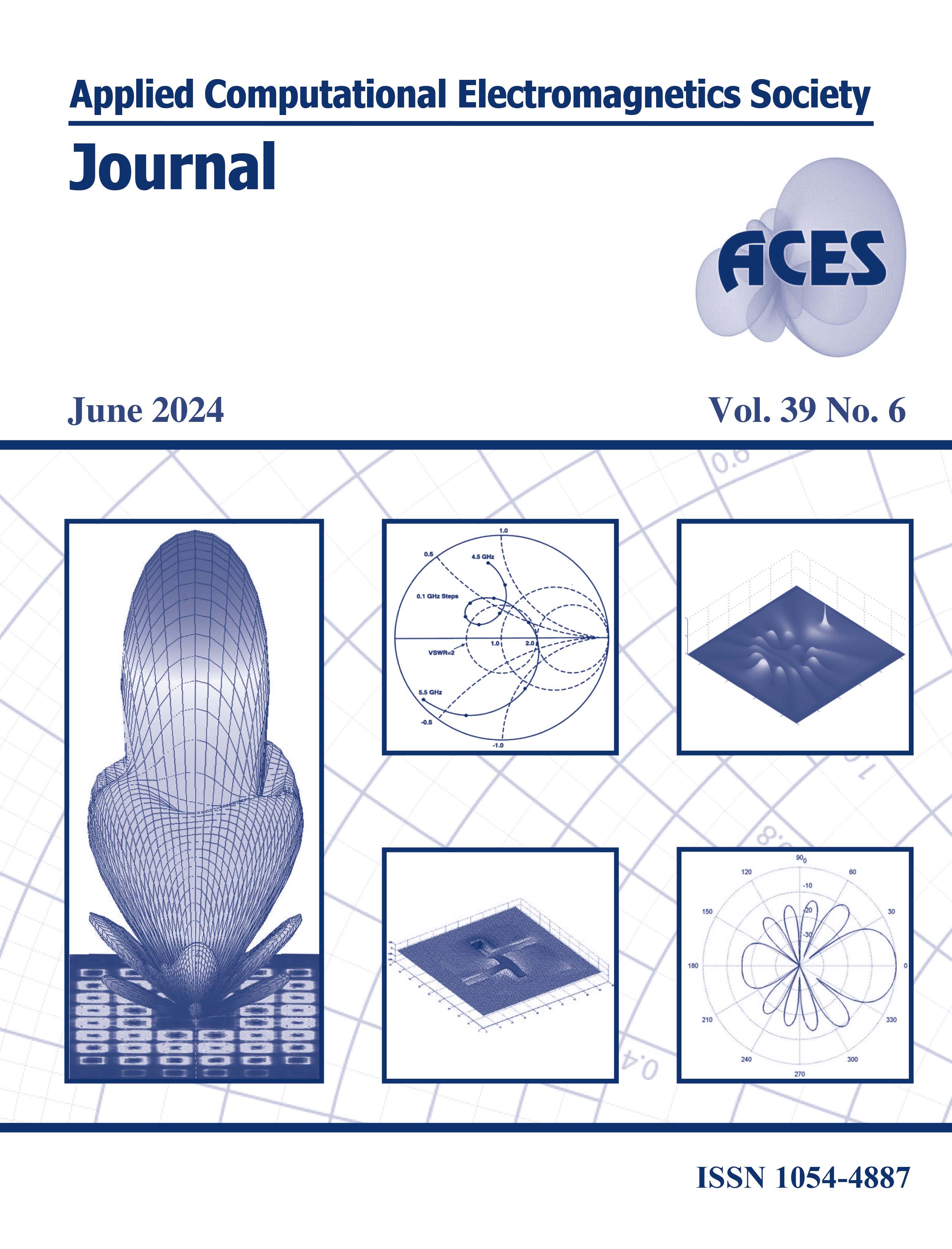Efficient Electromagnetic Compatibility Optimization Design Based on the Stochastic Collocation Method
##plugins.pubIds.doi.readerDisplayName##:
https://doi.org/10.13052/2024.ACES.J.390607关键词:
Efficient optimization design, electromagnetic compatibility, Failure Mechanism Analysis, Intelligent Optimization Algorithms, Stochastic Collocation Method摘要
Nowadays, in the field of electromagnetic compatibility (EMC), numerical methods such as finite element analysis are often used for simulation analysis. These numerical methods take a long time to solve some complex simulation problems, which is not conducive to the optimal design of EMC. In particular, the intelligent optimization algorithm that needs continuous iterative calculation will not be realized because of the long optimization time. This paper realizes the innovative application of the uncertainty analysis method (Stochastic Collocation Method) in EMC optimization design. Two typical EMC optimization design problems, namely, the prediction of cable crosstalk and the design of shielding performance of metal boxes, are proposed to verify the effectiveness of the optimization algorithm. Meanwhile, its performance is compared with the classical intelligent optimization algorithms such as genetic algorithms and immune algorithms.
##plugins.generic.usageStats.downloads##
参考
C. Salvatore, L. Antonino, and F. F. Riganti, “TEAM problem 22 approached by a hybrid artifificial life method,” COMPEL The International Journal for Computation and Mathematics in Electrical and Electronic Engineering, vol. 31, no. 3, pp. 816-826, May 2012.
R. Jauregui, M. Aragon, and F. Silva, “The role of uncertainty in the feature selective validation (FSV) method,” vol. 55, no. 1, pp. 217-220, Feb. 2013.
K. R. Ali, Y. Shiyou, and K. Shafiullah, “A multimodal improved particle swarm optimization for high dimensional problems in electromagnetic devices,” Energies, vol. 14, no. 24, p. 8575, Dec. 2021.
O. U. Rehman and S. Yang, “A quantum particle swarm optimizer with enhanced strategy for global optimization of electromagnetic devices,” IEEE Transactions on Magnetics, vol. 55, no. 8, pp. 1-4, May 2019.
T. Zheng and S. Yang, “A robust methodology for design optimizations of electromagnetic devices under uncertainties,” International Journal of Applied Electromagnetics and Mechanics, vol. 59, no. 1, pp. 71-78, Mar. 2019.
S. An and L. Liu, “A preference-based physical programming method for multi-objective designs of electromagnetic devices,” EEE Transactions on Magnetics, vol. 56, no. 3, pp. 1-4, Mar. 2020.
A. Bingler, S. Bilicz, and M. Csörnyei, “Global sensitivity analysis using a Kriging metamodel for EM design problems with functional outputs,” IEEE Transactions on Magnetics, vol. 58, no. 9, pp. 1-4, Apr. 2022.
Y. Li and S. Xiao, “A dual Kriging approach with improved points selection algorithm for memory efficient surrogate optimization in electromagnetics,” IEEE Transactions on Magnetics, vol. 52, no. 3, pp. 1-4, Mar. 2016.
J. Bai, B. Hu, and Z. Xue, “EMC uncertainty simulation method based on improved Kriging model,” IEEE Letters on Electromagnetic Compatibility Practice and Applications, vol. 5, no. 4, pp. 127-130, July 2023.
T. Akhtar and C. A. Shoemaker, “Multi objective optimization of computationally expensive multi-modal functions with RBF surrogates and multi-rule selection,” Journal of Global Optimization, vol. 64, no. 1, pp. 17-32, Jan. 2016.
G. Spadacini and S. A. Pignari, “Numerical assessment of radiated susceptibility of twisted-wire pairs with random nonuniform twisting,” IEEE Transactions on Electromagnetic Compatibility, vol. 55, no. 5, pp. 956-964, Oct. 2013.
C. Jullien and P. Besnier, “Advanced modeling of crosstalk between an unshielded twisted pair cable and an unshielded wire above a ground plane,” IEEE Transactions on Electromagnetic Compatibility, vol. 55, no. 1, pp. 183-194, Feb. 2013.
Z. Fei and Y. Huang, “Uncertainty quantification of crosstalk using stochastic reduced order models,” IEEE Transactions on Electromagnetic Compatibility, vol. 59, no. 1, pp. 228-239, Aug. 2017.
J. Bai and L. Wang, “Validity evaluation of the uncertain EMC simulation results,” IEEE Transactions on Electromagnetic Compatibility, vol. 59, no. 3, pp. 797-804, June 2017.
J. Bai and J. Sun, “Convergence determination of EMC uncertainty simulation based on the improved mean equivalent area method,” Applied Computational Electromagnetics Society (ACES) Journal, vol. 36, no. 11, pp. 1446-1452, Dec. 2021.
P. Manfredi and D. V. Ginste, “Stochastic transmission line analysis via Polynomial Chaos Methods: An overview,” IEEE Electromagnetic Compatibility Magazine, vol. 6, no. 3, pp. 77-84, Nov. 2017.
J. Bai and G. Zhang, “Performance comparison of the SGM and the SCM in EMC simulation,” IEEE Transactions on Electromagnetic Compatibility, vol. 58, no. 6, pp. 1739-1746, Dec. 2016.
J. Bai and G. Zhang, “Dimension-reduced sparse grid strategy for a stochastic collocation method in EMC software,” IEEE Transactions on Electromagnetic Compatibility, vol. 60, no. 1, pp. 218-224, Feb. 2018.
J. Bai and G. Zhang, “Uncertainty analysis in EMC simulation based on improved Method of Moments,” IEEE Transactions on Electromagnetic Compatibility, vol. 31, no. 1, pp. 66-71, Dec. 2021.
COMSOL. (2023, Oct.) Anechoic electromagnetic wave absorption [Online]. Available: http://cn.comsol.com/model/anechoicchamber-absorbing-electromagnetic-waves-38681
Z. Ren and J. Ma, “Managing uncertainties of permanent magnet synchronous machine by adaptive Kriging assisted weight index Monte Carlo simulation method,” IEEE Transactions on Electromagnetic Compatibility, vol. 35, no. 4, pp. 2162-2169, Dec. 2020.
M. Xia and D. Sun, “A novel methodology for robust topology optimization considering manufacturing errors and topology deviations,” IEEE Transactions on Electromagnetic Compatibility, vol. 58, no. 9, pp. 1-4, Sep. 2022.




